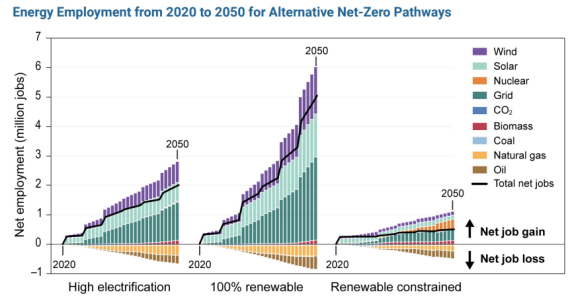 Arguments
Arguments
 Software
Software
 Resources
Comments
Resources
Comments
 The Consensus Project
The Consensus Project
 Translations
Translations
 About
Support
About
Support


Latest Posts
- Skeptical Science New Research for Week #49 2025
- Climate Adam & Dr Gilbz - Paris Climate Agreement At 10: Did It Do Anything?
- Fact brief - Does the recent slowdown in Arctic sea-ice extent loss disprove human-caused warming?
- Why the chemtrail conspiracy theory lingers and grows – and why Tucker Carlson is talking about it
- 2025 SkS Weekly Climate Change & Global Warming News Roundup #48
- Skeptical Science New Research for Week #48 2025
- Consensus machines
- Just have a Think - How an African energy revolution could save ALL of us.
- A girl’s grades drop every summer. There’s an alarming explanation.
- 2025 SkS Weekly Climate Change & Global Warming News Roundup #47
- Fact brief - Are changes in solar activity causing climate change?
- Skeptical Science New Research for Week #47 2025
- Exploring newly released estimates of current policy warming
- Climate Adam - Why the Climate Crisis is a Health Crisis
- Super pollutants are trendy, but we should be careful how we use them
- 2025 SkS Weekly Climate Change & Global Warming News Roundup #46
- Skeptical Science New Research for Week #46 2025
- On the Gates climate memo
- Climate Adam - Climate Scientist responds to Bill Gates
- Five ways Joe Rogan misleads listeners about climate change
- 2025 SkS Weekly Climate Change & Global Warming News Roundup #45
- Skeptical Science New Research for Week #45 2025
- Debunking Joe Rogan, Dick Lindzen, and Will Happer
- Fact brief - Does cold weather disprove human-caused climate change
- Climate change strengthened Hurricane Melissa, making the storm’s winds stronger and the damage worse.
- 2025 SkS Weekly Climate Change & Global Warming News Roundup #44
- Skeptical Science New Research for Week #43 2025
- Climate Adam - Can Solar Halt the Desert?
- Fact brief - Is there empirical evidence for human-caused global warming?
- A “controversial” methane metric?
Archived Rebuttal
This is the archived Intermediate rebuttal to the climate myth "Wind energy is bad for U.S. jobs". Click here to view the latest rebuttal.
What the science says...
|
Wind power is a fast-growing industry, employing roughly 120,000 U.S. workers in 2021 and creating roughly 5,400 new jobs (up 4.7%) since 2019. |
Wind power is a fast-growing industry, creating many U.S. jobs. In 2021, wind energy production employed roughly 120,000 U.S. workers, creating roughly 5,400 new jobs (up 4.7%) since 2019.1 The Department of Energy suggests that this sector could employ as many as 600,000 U.S. workers by 2050.2 As noted previously, the United States’ Fifth National Climate Assessment predicts that there will be nearly 3,000,000 new solar, wind, and transmission-related jobs by 2050 in a high electrification scenario and 6,000,000 new jobs in a 100% renewable scenario, with less than 1,000,000 fossil fuel-related jobs lost.3
Figure 1: Energy employment from 2020 to 2050 under various U.S. net-zero GHG emissions scenarios. Source: U.S. Global Change Research Program.
Most of the current domestic jobs are in manufacturing.4 Over 500 U.S. manufacturing facilities now specialize in producing components for wind power generation.5 For turbines installed in the United States, approximately 70% of tower manufacturing and 80% of nacelle assembly also occurs domestically.6 Furthermore, the U.S. Bureau of Labor Statistics identified wind turbine service technicians as the fastest growing occupation between 2022 and 2023, growing roughly 45% in size during that time.7
Footnotes:
[1] United States Energy & Employment Report 2022, Office of Policy, Office of Energy Jobs, U.S. Department of Energy, 24 (June 2022).
[2] Wind Vision: A New Era for Wind Power in the United States, U.S. Department of Energy, 105 (2015)
[3] U.S. Global Change Research Program, Fifth National Climate Assessment at 32-31 (2023).
[4] James Hamilton et al., Careers in Wind Energy, U.S. Bureau of Labor Statistics (Sept. 2010)
[5] Wind Energy Technologies Office, Wind Manufacturing and Supply Chain, Office of Energy Efficiency and Renewable Energy, U.S. Department of Energy (last visited March 25, 2024).
[6] The nacelle is the housing that holds the gearbox, generator, drivetrain, and brake assembly.
[7] Fastest Growing Occupations, U.S. Bureau of Labor Statistics (Sept. 2023).
This rebuttal is based on the report "Rebutting 33 False Claims About Solar, Wind, and Electric Vehicles" written by Matthew Eisenson, Jacob Elkin, Andy Fitch, Matthew Ard, Kaya Sittinger & Samuel Lavine and published by the Sabin Center for Climate Change Law at Columbia Law School in 2024. Skeptical Science sincerely appreciates Sabin Center's generosity in collaborating with us to make this information available as widely as possible.
Updated on 2024-09-02 by .
THE ESCALATOR

(free to republish)

























































